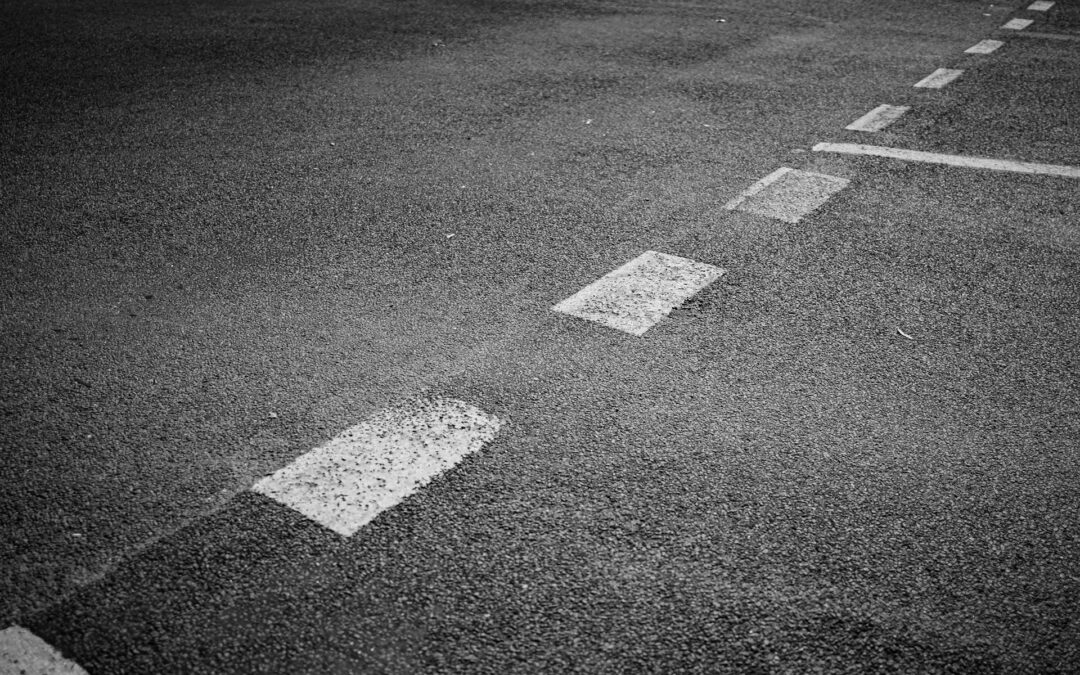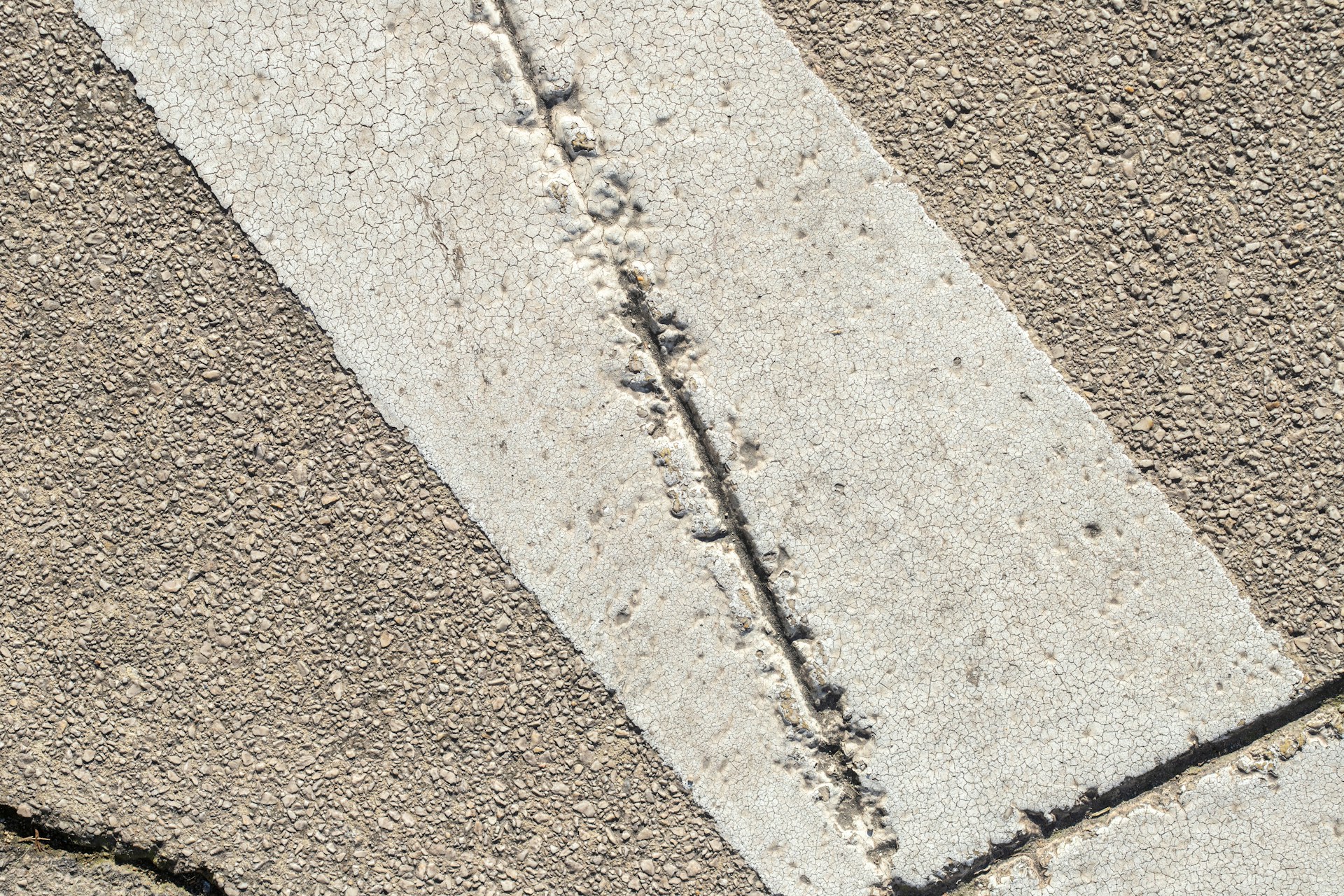Clear road markings guide traffic, separate lanes, and help drivers make safe decisions. When those lines start to fade or disappear, accidents can happen more easily and confusion increases, especially in bad weather or at night. Whether you’re driving through a busy intersection or a quiet residential street, visible markings make the road feel predictable. Without them, things can go wrong fast.
Some visibility problems build up slowly, while others happen more quickly after storms or cold snaps. This time of year, as fall wraps up and winter creeps in, road paint that’s already weak can become almost invisible. Drivers rely on markings to judge where to stop, turn, or stay in their lane, so when they’re too faded to see, everyone’s at risk. Let’s look at what causes these issues so you’re better prepared to deal with them.
Causes Of Road Marking Visibility Problems
There are a few common reasons that road markings fade or become hard to see. Some develop over time with use, while others result from shortcuts taken during installation. Knowing the root cause makes it easier to find a fix that lasts longer.
Here are several key causes:
– Heavy traffic and wear: Every vehicle that travels over paint slowly wears it down. Tires, especially truck tires, put a lot of pressure on painted stripes.
– Low-quality application or materials: If the wrong type of paint or tape is used or if it’s not applied properly, it won’t hold up under regular use and weather conditions.
– Sun exposure: Over time, sunlight wears away at the brightness of markings. UV rays break down the pigment and cause fading faster on unsealed paint.
– Rain and snow: Water breaks down poorly sealed paint. Snowplows and salt push and scrape the paint too, making it deteriorate quickly in colder seasons.
– Surface conditions: If pavement is dusty, oily, or breaking down before the markings are applied, nothing will stick well. This causes the markings to lift or fade prematurely.
One example we’ve seen is after fresh snow, where roads were de-iced but older paint didn’t hold up. Drivers couldn’t make out the lane splits and ended up weaving too close to each other. Paint that was fine during summer completely vanished when mixed with snowmelt, sand, and tire wear.
Assessing Visibility Issues
Faded markings aren’t always obvious during daylight, especially if the road is dry. But poor visibility becomes clear at night or in low-light settings like dusk or rainy mornings. That’s when road users start struggling to stay in their lanes, and it’s often the first sign that something needs attention.
Here’s how to spot common visibility issues:
– Faint or missing lines across intersections
– Interrupted dashed lines where only sections remain visible
– Reflective beads in paint that no longer bounce back light
– Markings that blend in with pavement after rain
A quick drive down a marked road during early morning or dusk can help assess visibility. Look for how well headlights reflect on painted stripes. Parking lot markings can be checked the same way, making sure transitions like crosswalks and directional arrows are still guiding traffic as intended.
Using a checklist or log for regular inspections helps keep things on track. Include:
– Noting the wear level of each type of marking (centerlines, arrows, crosswalks)
– Scheduling more frequent checks after snowstorms or heavy rainfall
– Keeping photos for reference over time to track fading
Small fixes done early can save larger rework later. Spotting these problems before they become traffic hazards makes repairs easier and keeps users safer year-round.
Effective Solutions For Improving Road Marking Visibility
Once visibility issues are identified, the next step is finding the right fix. Not all faded markings need a full redo, but solutions should match the surface condition, traffic level, and weather exposure.
One reliable method is repainting faded lines using high-durability paint with embedded reflective beads. These beads help reflect headlights at night or in poor visibility, making the markings much easier to see. In areas with heavy traffic or winter snowplow use, thermoplastic markings often hold up better. They bond with the pavement under heat and can stand up to wear much longer.
You can also refresh visibility by overlaying tape markings designed with built-in reflectivity. These work best for short-term fixes or tricky surfaces where paint might not grip well. For high-traffic intersections or curves, combining paint with raised markers or reflective studs makes lanes more defined, especially at night.
Here’s how professional road marking services typically handle this work:
- Inspect the road thoroughly and document all markings that need attention.
- Clean the pavement to remove debris, old paint, or residue that could prevent new materials from sticking.
- Choose paint or materials suited to the conditions, like waterborne paint for warmer weather or thermoplastic for longer lifespan installations.
- Apply reflective beads during or right after painting to ensure night visibility.
- Block off the area, let it dry or cure properly, and document finished work for records and inspections.
Timing the work around mild weather helps with better bonding and faster drying. Spring and late summer are usually the best times to get markings done before extreme weather kicks in again.
Preventative Measures And Maintenance Tips
Keeping markings easy to see year-round doesn’t just come down to the paint itself. How well you care for those markings plays a big role too. Preventative upkeep can slow down wear and help avoid constant repainting.
Here are a few smart habits to keep markings sharp:
– Schedule routine inspections every season, even if nothing seems wrong at first glance.
– After snowstorms or de-icing treatments, check for peeling or scraped sections.
– Clean major roadways and intersections regularly to remove dirt and salt buildup.
– Use sealcoating where needed to lock in line visibility and prevent materials from breaking down.
– Record problem areas and set reminders for follow-up checks every few months.
Working closely with a professional crew also helps map out a realistic preservation schedule. They’ll know what materials were used and how often they need to be looked at again. A well-managed record system helps plan ahead instead of reacting late.
For example, one city found that rechecking bike lanes right after plowing events helped them stay proactive instead of waiting for drivers to call in complaints. That extra attention made the commuting experience smoother and safer during the worst winter weeks.
Why Clear Markings Keep Roads Safer For Everyone
Keeping road markings visible isn’t just a box to check off. It keeps people safe. Whether it’s reducing confusion at a four-way stop or helping drivers stay in the right lane on a winding road, good markings guide movement and lower the chance of mistakes.
By addressing visibility problems early, using the right fix for each issue, and sticking to a consistent maintenance plan, things can run much more smoothly. You don’t need to wait until lines disappear completely to act. A bit of early effort keeps roads safer for everyone.
Putting attention into marking quality and visibility is a long-term win. Traffic moves better, drivers feel more confident, and maintenance costs go down when problems are handled before they get serious. Clear lines keep everything, and everyone, in check.
Ensure your roadways remain safe and visible with professional road marking services from Hyperformance Traffic Safety Supplies. Our solutions are designed to enhance visibility, reduce confusion, and keep traffic flowing smoothly in all conditions. By utilizing high-quality materials and proven techniques, we help make your roads work better and last longer. Reach out to us today to discover how we can tackle your visibility challenges and improve overall roadway safety.




